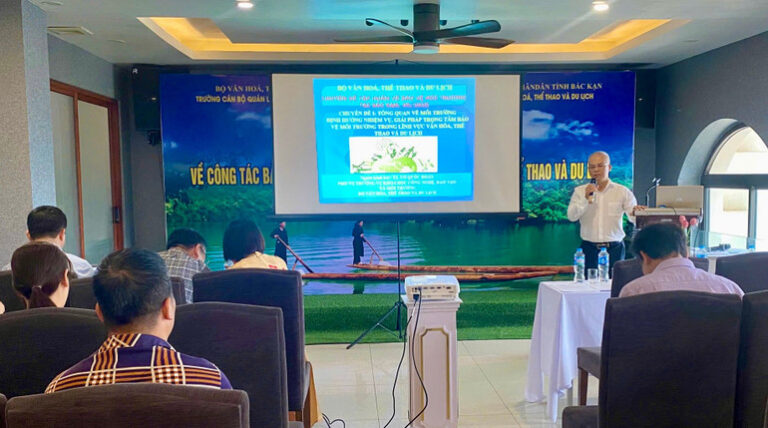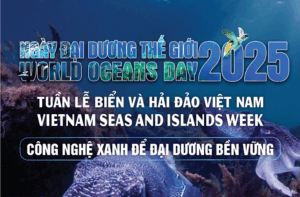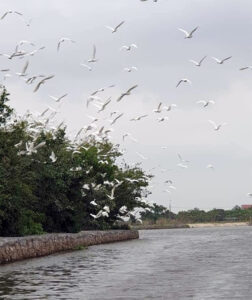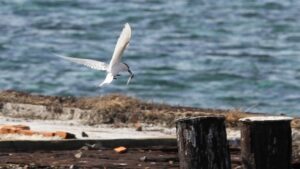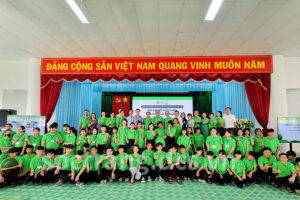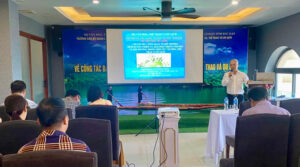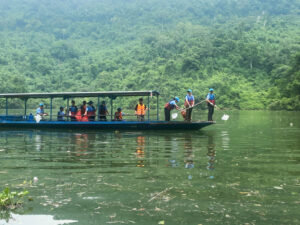The law, approved by the National Assembly in November 2008, was a great move toward solid development, said Nguyen Dang Vang, Vice Chairman of the National Assembly’s Science, Technology and Environment Committee. "Biodiversity takes millions of years to develop. Once a species becomes extinct, we can’t bring it back to life," Vang said.
"Viet Nam is one of a dozen countries in the United Nations with the highest level of biodiversity," he noted.
Professor Djaja Djendoel Soejarto of University of Illinois at Chicago agreed. He has collaborated with scientists at the Viet Nam Academy of Science and Technology since 1994 in projects on flora in Cuc Phuong National Park. "Many things are still not known about Viet Nam’s biodiversity," Soejarto said. "For example, we still do not know all the plant species that are in the forests and wild habitats in Viet Nam. Ongoing studies have also shown that new plant and animal species still continue to be discovered in the forests here. "Protecting Viet Nam’s biodiversity will allow scientists to study the country’s biodiversity resources for many purposes that would benefit people," he said.
The right answer
One point in the new law is that "protecting biodiversity" should be interpreted as "regulating the use of the biodiversity’," Soejarto said.
According to Vang, before the Law on Biodiversity, environmental protection was all about prohibition. "We used to prohibit everything that concerned valuable natural resources and products, from private ownership to trading," Vang said. "But prohibition was not the answer," he affirmed. "For example, people breed around 4,000 bears for bear gall. It costs approximately US$2 million to breed 80 bears. If the Government prohibit private ownership of bears, we would have to take in all 4,000 bears, which would cost approximately $100 million, which is too much for the Government to handle. And that’s only bears," Vang said.
Now according to the new law, private ownership and use of valuable natural resources are allowed, as long as they follow the regulations. The objects and limits are stipulated clearly in the new law. There are different ranges for freedom and prohibition. For example, Binh Duong tigers now can be traded for zoology research or viewing. Before, private consumption of crocodiles was prohibited, but under the new law second generation crocodiles can be consumed when the number in the group reaches 20,000. In 2007, in Ben Tre alone, 140,000 crocodiles were bred which was enough to supply the whole Cuu Long (Mekong) Delta area and have enough for export.
Tough nut
The drafting of the new law, according to Vang, was very hard work. "The valuable natural resources are always the most expensive and sought-after. Thus the more diverse the bio-system, the more people want to seek profit from it," he said.
On the other hand, the habit of privately owning and consuming valuable natural products was a hard-to-change negativity. Tiger bone glue, monkey glue and bear gall were some of the most favoured products in the country, due to the belief that they offer a cure for sickness.
"The more we stop people from consuming those products, the more they want them," says Vang. "So prohibition is obviously not the best solution." "We worked very hard on researching and studying to work out regulations that would gradually change people’s negative habits without prohibition," he said. But the most difficult part of the process, Vang said, was combining all the different existing laws on natural resources to build the new law. "There were many different laws regulating the use of natural resources. There was Law on Forest Development and the Sea Law, etc. and so many different agencies are responsible for one thing," he said. "For example, there are 164 special forests in the country, which are managed by the Ministry of Agriculture and Rural Development. But protecting the biodiversity in these forests is the responsibility of the Ministry of Natural Resources and Environment. That was very confusing," said Vang.
"Unifying the laws and re-assigning all the related agencies were really tough tasks," he said.
The Ministry of Natural Resources and Environment is now the sole agency responsible for the management and protection of the nation’s biodiversity, according to the new law.
"When we have one unified and stable law on biodiversity, I believe that there will be more big projects on natural products," said Le Xuan Canh, Director of the Institute of Ecology and Biological Resources, under the Viet Nam Academy of Science and Technology, and Professor Soejarto’s long-term collaborator on the Viet Nam side.
"The unified management will bring about a better planning of maintaining and developing our country’s biodiversity," he said.
"In summary," said Prof. Soejarto. "Well kept resources to help promote and attract the interests of foreign scientists to come to Viet Nam to undertake research to study the country’s biodiversity.
"The end result is co-operation among scientists of different nationalities and expertise in the study of Viet Nam’s biodiversity."



